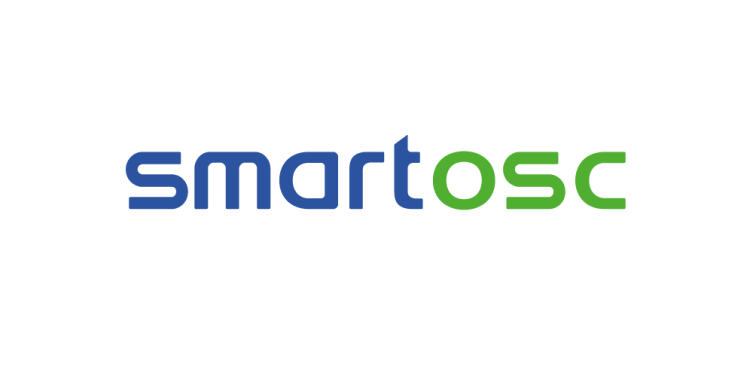In a rapidly changing world, teams need more than communication-they need agility. An agile environment combines structure with adaptability, enabling teams to respond quickly to challenges, seize opportunities, and enhance collaboration. Creating an agile environment is essential for businesses aiming to boost productivity, innovation, and competitiveness.
This article provides practical strategies to build this dynamic approach, helping your team thrive and achieve sustainable success.
The Meaning of Agile Environment
An agile environment is a workspace or project setting that embraces the principles of agile methodology. It emphasizes flexibility, teamwork, iterative progress, and quick adaptability to change. Instead of following a linear approach, teams in an agile environment work in cycles, enabling ongoing assessment and adjustment of project objectives.
This adaptive method boosts efficiency, creativity, and responsiveness, making it especially valuable in fast-paced fields like software development and digital marketing.
Why is an Agile environment essential?
An agile environment is essential because it enables organizations to quickly adapt to changes, maintain a strong focus on customer needs, and continuously improve their processes and products.
Here are some key reasons why an agile working environment is so valuable:
- Enhanced Flexibility: Agile environments allow teams to respond quickly to new information, market shifts, or customer feedback, ensuring that the final product remains relevant and valuable.
- Improved Collaboration: Agile fosters close teamwork and communication, often across different functions, leading to more creative solutions and fewer misunderstandings.
- Increased Efficiency: By breaking down projects into smaller, manageable iterations, agile environments help teams deliver results faster. Regular reviews allow teams to identify and eliminate inefficiencies, streamlining the development process.
- Higher Customer Satisfaction: With a focus on delivering value early and continuously, agile working environments enable teams to incorporate customer feedback throughout the project, leading to products that better meet user needs and expectations.
- Reduced Risk: Working in iterations allows for constant evaluation, which helps in identifying potential issues early. This iterative approach minimizes the risk of large-scale project failures by addressing problems as they arise.
- Continuous Improvement: Agile environments emphasize learning and growth, encouraging teams to regularly reflect on their work, adapt strategies, and improve processes, which leads to better performance over time.
Step-to-step to Create an Agile Environment for Enhanced Team Collaboration
Here’s a step-by-step guide to building an agile environment that enhances team collaboration:
Understand Agile mindsets and values
To begin, immerse yourself in the agile philosophy. Agile values emphasize collaboration, customer focus, and adaptability. It’s crucial to understand these principles deeply, as they will form the foundation of your agile environment.
Consider resources like the Agile Manifesto and its 12 principles as starting points, and reflect on how these align with your organization’s mission.
Clarify your goals
Next, identify what you want to achieve by adopting agile. Clear goals provide your team with direction and purpose. Whether it’s faster product delivery, higher customer satisfaction, or improved teamwork, understanding your objectives will help guide the agile transformation and keep everyone aligned.
Train your team
Agile requires a shift in mindset, so training is essential. Provide your team with agile training sessions, workshops, or even certification courses. This step ensures that everyone understands agile practices, such as working in sprints, holding regular stand-up meetings, and conducting retrospectives. With the right knowledge, your team will be better prepared to embrace agile processes
Promote collaboration
Encourage open communication and teamwork. Agile thrives on a dynamic working environment, so create opportunities for team members to work together and share ideas. Implement tools like Slack, Trello, or Jira to facilitate seamless communication, task tracking, and project updates. This promotes transparency and keeps everyone on the same page.
Embrace adaptability
Agile environments are all about flexibility. Empower your team to make adjustments when needed and be open to change. Foster a culture where pivoting in response to feedback or new information is seen as a strength, not a setback. This adaptability allows your team to respond swiftly to challenges and capitalize on new opportunities.
Respect diverse viewpoints
Agile teams benefit from diverse perspectives. Encourage team members to share their opinions and respect differing viewpoints. A diverse team brings unique insights that can lead to more innovative solutions and better decision-making.
Celebrate achievements
Finally, celebrate milestones and successes. Recognizing achievements keeps team morale high and reinforces the value of agile practices. Hold regular review sessions to reflect on what went well and where improvements can be made, allowing your team to continuously grow and evolve in a positive, supportive environment.
Considerations for Creating an Agile Environment
Establishing an agile working environment involves more than just adopting new tools and processes; it requires thoughtful planning and a commitment to cultural change. To ensure a successful transition to agile that boosts collaboration, adaptability, and efficiency, it’s important to focus on key factors, including fostering employee engagement. By actively involving your team in the process, you can create an environment where everyone is motivated and invested in the agile transformation, leading to greater long-term success.
Securing Leadership Support
Gaining the support of leadership is crucial when creating an agile environment. Leaders set the tone for the entire organization, so their buy-in helps reinforce agile values and principles. Educate leadership on agile’s benefits, such as faster project delivery, better customer satisfaction, and improved adaptability.
Leaders should also be prepared to champion agile practices and provide the necessary resources for team training and tools. When leaders support and advocate for agile, it empowers teams to embrace the transformation and ensures that agile principles are integrated at every level of the organization.
Effectively Managing an Agile Team in a Remote Work Setting
Agile thrives on collaboration and communication, which can be challenging in remote work environments. However, with the right strategies, agile teams can effectively work together regardless of location. Start by using digital tools that facilitate teamwork and keep everyone connected, such as Slack, Zoom, and project management platforms like Jira or Trello. Schedule regular check-ins, including daily stand-ups and sprint reviews, to keep communication flowing.
Additionally, promotes a culture of trust and accountability, where team members are empowered to manage their own time and tasks. Establish clear goals, encourage frequent feedback, and celebrate small wins to maintain engagement and motivation. With these considerations, remote agile teams can remain productive, engaged, and aligned with project goals.
Conclusion
In conclusion, creating an agile environment is essential for fostering adaptability, teamwork, and innovation within your organization. With implementing the strategies outlined-embracing agile mindsets, promoting collaboration, and securing leadership support, you can build a resilient team ready to meet today’s dynamic challenges. If you’re passionate about agile principles and ready to contribute to cutting-edge projects, explore SmartOSC Careers for opportunities in IT jobs in Vietnam.






